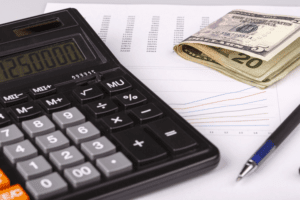
These charges create a difference of balance between bank statement and the balance as per depositor’s record. The purpose of excluding certain transactions from a bank reconciliation statement is to ensure that the statement accurately reflects the balance of the account. By excluding transactions that have not yet cleared the bank, the statement provides a more accurate picture of the account’s balance. Finally, the bottom line of a financial statement will not contra asset account be included in a bank reconciliation statement.

Outstanding checks vs unreleased checks
If they haven’t received the payment, they may contact you to reissue the check. If the payee decides to cash the check later, this can help avoid any unnecessary NSFs. With the above illustration, do you think we can now calculate our outstanding checks? If they haven’t received the payment, this may nudge them to notify you to reissue the check.

Example of an Outstanding Check in the Bank Reconciliation

You can do so by comparing the checks issued in your accounting record with the checks honored as per your bank statement. These are checks that the company has written but have not yet been cleared by the bank. Until this occurs, the payer’s account balance from the cash flow will remain unchanged. Outstanding checks can cause a slew of issues in the bookkeeping, business accounting, and banking industries. Checks that are outstanding for a long period of time are known as stale checks.
- When a company writes a check, the company records it with a credit to the Cash account in the company’s general ledger.
- The time it takes for the postal service to deliver the check and the payee to deposit it results in a multi-day delay between when a check is created and when it is presented for payment.
- Tracking of payments can be accomplished through the use of checks, which provide both a paper trail and evidence of payment.
- These items include outstanding checks, deposits in transit, bank errors, and interest earned or charged by the bank.
- Furthermore, if the payor’s account lacks sufficient funds, the check does not clear.
Step 5 – Are the adjusted balances equal?

These records may disagree due to various reasons and show different balances. The purpose of preparing a bank reconciliation statement is to find and understand the reasons of this difference in account balance. If the cash balance in your checking account appears to an outstanding check is one that has been issued but not yet reported on a bank statement. be excessive, it could be due to outstanding checks. Outstanding checks can result in inaccurate accounting, overdraft issues, and other financial blunders. It is important to understand what is not included in a bank reconciliation statement in order to ensure that the statement accurately reflects the balance of the account.
- This should provide real-time information about the total dollar amount of checks outstanding and the total dollar balance present in the account.
- It is the process of comparing the bank statement with the company’s accounting records to ensure that they match.
- Some checks become stale if dated after 60 or 90 days, while others become void after six months.
- Transactions that are excluded from a bank reconciliation statement include any transactions that have not yet cleared the bank.
- Instead, they consider it during the bank reconciliation process to ensure that the cash balance reported on the balance sheet is accurate.
These are checks that have been issued by the company but have not yet cleared the bank. Outstanding checks are subtracted from the bank balance to arrive at the adjusted bank balance. Another item that will not be included in a bank reconciliation statement is the bank and service charges. Banks charge fees for various services, such as check printing, ATM usage, and wire transfers.
Where are outstanding checks recorded?
If a check remains outstanding for an extended period, it may become stale-dated, and the bank may refuse to honor it. Outstanding checks that remain so for a long period of time are known as stale checks. Someone else could be able to change the payee name or the amount if a check is misplaced or stolen before it is taken to the bank. All else being equal, it is safest if a check is deposited as fast as possible to avoid tampering with the instrument. Subtract the outstanding deposit from your small business ledger to adjust your records. When you wrote a check to a vendor and they didn’t deposit it within 180 days, you could simply write off the check and debit the money back to your checking account.

Accounting Entries
- However, by the end of the month, the landlord still needs to deposit the check.
- The bank reconciliation statement is a document that shows the differences between the bank statement and the accounting records.
- While these transactions may affect the company’s overall financial position, they do not directly impact the bank balance.
- After depositing the check, your bank immediately credited your account by $1000.
- It is important to note that NSF checks should not be included in the bank reconciliation statement because they are not considered a valid form of payment.
- Even though the bank statement may not display it, the payee’s account incurs a debit for the amount of the outstanding check.
You can measure profitability and forecast cash flow by using outstanding deposits to balance the accounts. When doing your bookkeeping, there is always the possibility of making a mistake. To avoid forgetting important monthly tasks, create a small business accounting checklist. Bank statement reconciliation ensures that your bank statement and books are in sync. If you don’t reconcile your accounts, you’ll waste more time and money correcting errors. One of the items that will not be included in a bank reconciliation statement is Non-Sufficient Funds (NSF) checks.
- Unreleased checks have not yet been issued to the payee but have been deducted from the cash account.
- Like the income statement, it does not provide any information related to the company’s bank account.
- On your reconciliation sheet, outstanding checks are often subtracted from your balance per bank because these withdrawals have not yet happened but are simply a timing matter.
- NSF checks are usually returned to the account holder, and the bank will charge a fee for the returned check.
- These errors are the responsibility of the bank, and they must be corrected by the bank.
In summary, a bank reconciliation statement is a useful tool for ensuring the accuracy of an organization’s financial records. However, there are certain items that are not included in this statement, including HVAC Bookkeeping outstanding checks, deposits in transit, bank errors, and bank fees and charges. In summary, NSF checks are not included in the bank reconciliation statement because they are not a valid form of payment. It is important to maintain sufficient funds in the account and reconcile bank statements regularly to avoid NSF checks and ensure accurate financial records. Journal entries are used to record transactions in the company’s accounting system.
How Outstanding Checks Work
However, bank and service charges will not be included in a bank reconciliation statement. It is the process of comparing the bank statement with the company’s accounting records to ensure that they match. This process helps in identifying any discrepancies or errors in the financial records. To reconcile outstanding checks with your bank statement, compare the checks issued but not yet cleared with the information provided on the statement, ensuring that both records align. On your reconciliation sheet, outstanding checks are often subtracted from your balance per bank because these withdrawals have not yet happened but are simply a timing matter. When an organization prepares a bank reconciliation, it subtracts the outstanding checks from the bank statement balance to determine the correct or adjusted bank balance.
